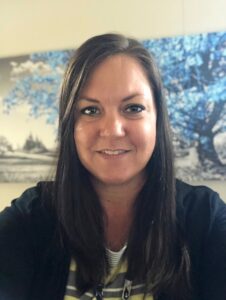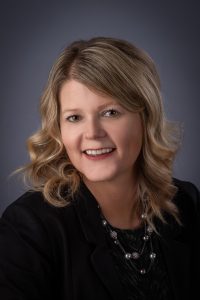
“Our 31n counselors ‘played in the sandbox;’ practiced on the software so they were ready once we started using the system for real when the students returned,” Jennifer explained. “They were set up with assessments–which we did before on paper and pencil or through Google Docs—referrals, case notes, documentation, and Medicaid billing integration. It was a complete shift, but we launched it in late August.’”
Up until this year BAISD only had two counselors for five school buildings. The District now has seven counselors to serve 13 different K-12 schools. In its entirety, BAISD encompasses seven local K-12 school districts (46 schools and approximately 14,900 students), all public, charter, parochial, and private schools. It is located in Bay City near the base of the Saginaw Bay on Lake Huron; in between the thumb and first index finger in the ‘mitten’ shape that is the lower part of Michigan.

“We are trying to keep each counselor’s caseload to around 40-45 students. Once we get some data from bhworks, it will guide us for placing future resources,” Jennifer added.
BAISD has entered into a technical assistance agreement with Michigan Multi-Tiered System of Supports (MiMTSS). They are training all social workers and 31n counselors on foundational Functional Behavior Assessment-Behavior Intervention Plan (FBA/BIP) processes. This will allow these staff to become FBA/BIP trainers, who will in turn provide annual training for the ISD and districts. They are working to build the capacity and skill set of their 31n counselors, as they expect there to be more students with mental health needs in the upcoming year.
Each 31n counselor has developed a Mental Health Support flyer which includes a QR code that can be scanned by students or families to reach out and request support from the counselor. Students and parents at the middle school and high school level have access to the flyer in order to reach out themselves. At the elementary level, parents have access. Michelle explained, “We want to make sure we recognize the needs of students. We want them to have the ability to reach out to ask for help in a variety of ways.”
Because the District adheres to the child study process, an intervention program that helps students who are struggling academically and/or behaviorally, and in which parents are fully involved, gaining parental consent has not been an issue. However, Jennifer is focused on the potential challenge of obtaining consent when it’s a crisis situation. At times, parents do not clearly understand the support being offered, or are in denial of the support needed.
Jennifer is glad they started preparing over the summer. “When the students returned, our schools were ready to go. They understood what the process was and how to do it. For other ISDs, my advice is that the referral process should be laid out in advance, when a student should be referred, and of course it should go through the child study process,” she said.
Michelle concluded that over time, this work has expanded greatly. “As the district increased from two to seven counselors, the need for Jennifer’s role became more evident for managing the structure and systems for this to be successful. The process and system has to be strong and it has to have someone overseeing it. That’s Jennifer’s role. She coordinates and leads the behavioral health programs within each building in an effort to create and implement sustainable and impactful systems to support teaching and learning,” Michelle explained.
Last year, Jennifer coordinated the 31n services for five schools, but with her expanded role and the bhworks software platform, she is optimistic about where the ISD and the support provided to local districts is headed.
“We are moving forward in a way that will benefit our students,” Jennifer said. “Unfortunately, we don’t touch the needs yet of the whole ISD, but we will get there.”
Editor’s Note: Jennifer Ayers can be reached at ayersj@baisd.net if other Michigan ISDs would like to discuss or ask questions about her experience in launching this system.
